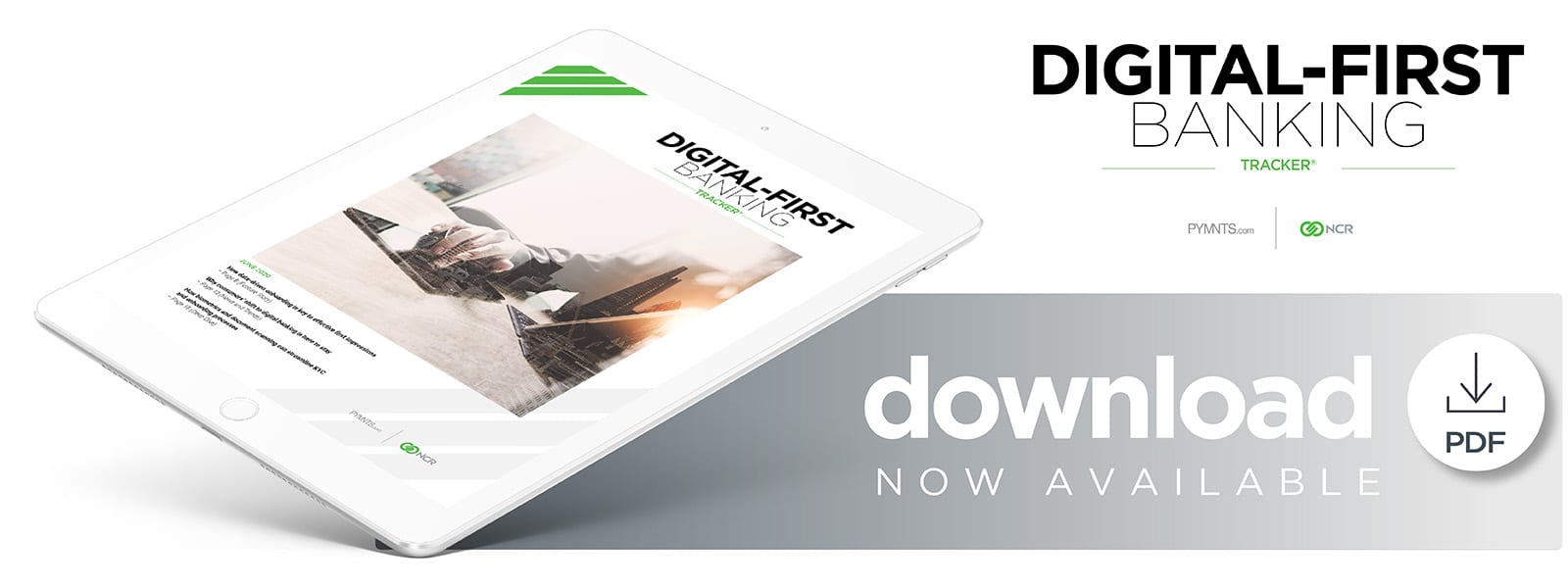Wells Fargo On Why First Impressions Are Key In Digital Banking

Consumers are embracing digital banking amid the pandemic, with many signing up for the first time. But time-consuming onboarding procedures that require extraneous details lead as many as 40 percent of customers to abandon the onboarding process. In this month’s Digital-First Banking Tracker, PYMNTS speaks with Ben Soccorsy, head of digital payments at Wells Fargo, about how banks can harness data analytics to determine the most common onboarding frustrations — and work to eliminate them.
The COVID-19 pandemic is one of the most monumental crises the banking industry has faced, and the sector must stare down the dual challenges of creating safety measures at branch locations while addressing the ongoing economic downturn that has stretched their capacity for processing and deferring loans. Bank branches are either closing outright or slashing their business hours to help customers maintain social distancing guidelines — but fortunately, the growing familiarity of digital banking has allowed customers to meet their financial needs online and has kept financial institutions (FIs) in business.
Some digital natives were used to accessing banking services online even before the pandemic made it the safest option, but this is the first time that many customers are exploring digital banking. It is essential for banks’ online offerings to be as seamless and easy to use as their in-branch functions in order to retain customers who may be less tech-savvy.
“The whole world is adjusting to the new normal related to [COVID-19], and we’re seeing our customers adjust their financial behavior and interactions with us accordingly,” said Ben Soccorsy, head of digital payments at Wells Fargo. “The best way to make that transition easy for people is to just make it dead simple.”
Onboarding is the most obvious aspect of digital banking to simplify, as the first impression can set the tone for the whole banking relationship. Other areas of digital banking will need to be as seamless as possible, too, as the shift toward digital will likely not end even after COVID-19 is more contained.
How Digital Banking Has Adjusted to the New Normal
Customers are turning to digital banking in record numbers because of the pandemic, with studies finding that 41 percent of those who typically visited or called banks in their pre-pandemic financial lifestyles have now shifted to using websites and mobile apps. Wells Fargo is no exception, according to Soccorsy.
“We’ve seen significant increases in a lot of aspects of our digital banking business,” he said. “There’s been a 20 percent-plus increase in customers signing into digital banking capabilities and significant month-over-month increases in mobile check deposits. In March, the number of [mobile] checks deposited was up 40 percent over February, for example. Mobile deposits, meanwhile, were up over 80 percent in April 2020 compared to April 2019.”
Much of this new digital traffic is due to the government stimulus bill that provided most Americans with $1,200 to help them stay afloat through the crisis. The Internal Revenue Service (IRS) noted that these payments would arrive much faster if recipients arranged for direct deposit rather than receiving a check in the mail, driving many Americans to open online accounts specifically for this purpose.
“One of the big focus areas for the whole [banking industry] was helping ensure that the stimulus money was processed as expeditiously as possible,” Soccorsy said. “For some customers, that may have been the first time they ever tried [mobile banking].”
Providing first-time customers with seamless signups is a key priority for the entire banking space, and harnessing customer data to identify and eliminate pain points goes a long way toward making this first impression count.
How Data Aids Seamless Onboarding
Onboarding can be a tedious process, including time-consuming regulatory checks, document verification and identity authentication. Identifying the specific pain points that customers face is the first step to alleviating these obstacles, according to Soccorsy.
“What’s great about digital banking is that we can leverage data to learn and improve our experiences,” he said. “We can understand where customers are getting hung up or where there might be confusion in the process, and then we can take out some of that friction.”
Customers attempting to use a digital banking service for the first time naturally have no existing loyalty to the product and may abandon the process entirely at the first point of friction, often resulting in banks losing these individuals’ business entirely. Studies have found that up to half of all consumers have abandoned an FI’s onboarding process at some point.
“First impressions really, really matter, especially when we’re at a time when digital is arguably the most important way that we engage with our customers,” Soccorsy said. “We try to reduce unnecessary steps as much as possible to make onboarding as simple and easy as possible.”
This digital engagement is likely to outlast the COVID-19 pandemic, according to Soccorsy, making smooth onboarding critical for decades to come. Thirty-one percent of bank customers who adopted digital banking due to the outbreak will continue to do so after the pandemic, representing a massive shift in consumer preferences.
“We’re not going back to the way things were,” he said. “When you have a disruptive event like this, people change their behavior out of necessity. But then they realize that there’s a lot of convenience associated with these capabilities and that they’re able to still do the things they need to do through [these] new approaches, [and that] makes it unnecessary for them to [return to old] approaches.”
More customers will likely become first-time digital users even after the end of the pandemic if banks make onboarding seamless enough for current users to recommend. This process will need to be just as frictionless for new customers to drive digital engagement long into the future.

